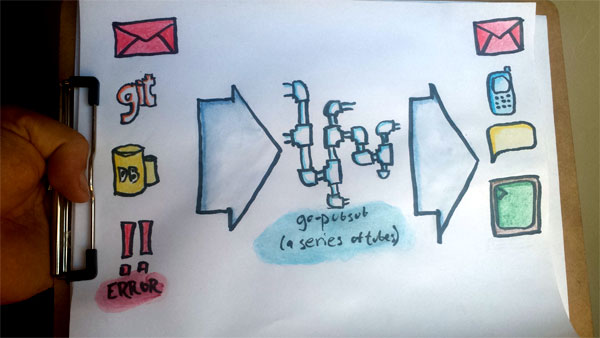Finishing the go-pubsub Package
04 Oct 2013
Actually finishing something is important. It often occurs that a person is either a starter or a finisher. If you are a starter, you pop from one project to the next, spitting out big ideas and often pushing through key proof-of-concept implementations. Then you see something else that needs your brilliant touch, and the project you just started is left incomplete – a testimony to your inability to finish what you start. I don’t understand finishers, as I’m not one of them, and while it seems a good idea to provide for them what I provided for starters, like myself, I have new things to talk about.
I have a great number of incomplete projects, and even more I never even got around to starting. I don’t have many finished projects. With that in mind, I have decided to put some effort into finishing some smallish project that will not only be a useful tool, but also demonstrate my abilities, and show that I can actually finish something.
I had two small projects that came to mind to work on. The first is fakeapi, a set of tools to make automated testing of third-party APIs easier. The basic concept is to provide an http client that will provide recorded or constructed responses. It would allow offline testing, buffer against issues with the third-party, allow testing of edge-cases, and all without increasing the complexity of the code being tested. It’s a project I do need to get back to at some point.

The other project is go-pubsub, a simple package that sets up the core functionality of a message dispatch system. I was frustrated that notifications from all of the services I use (ticket systems, source control, error logs, emails, etc.) all came in vastly different formats and often required active polling on my part for new information. It also occurred to me that I probably want these messages in a different format than my coworkers might. I decided to tackle this problem by building a service to route messages from publishers (the entities generating information) to subscribers (the entities consuming information) over multiplexed channels in go. This makes a perfect project for exploring concurrency in go to meet a real perceived need in my life.